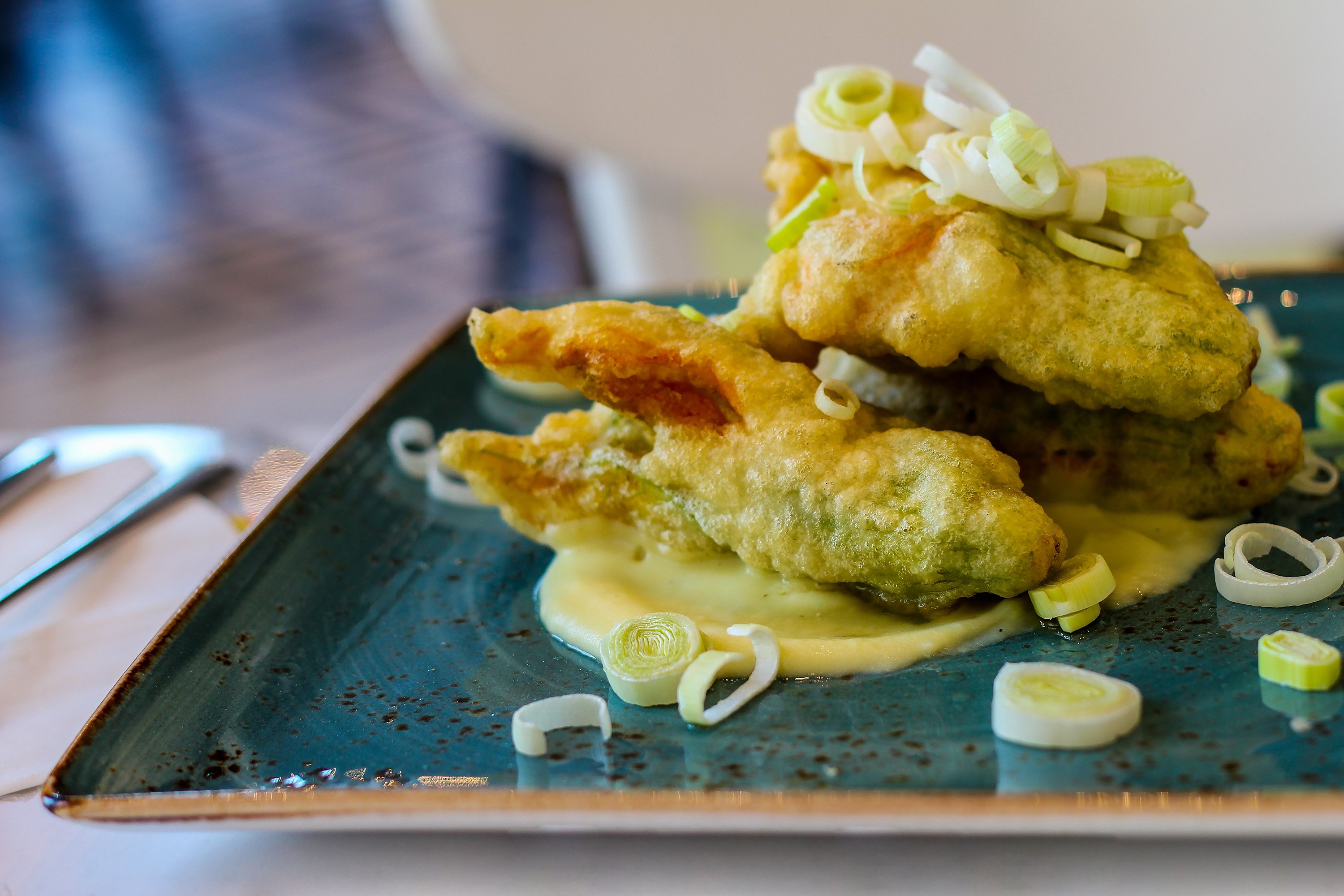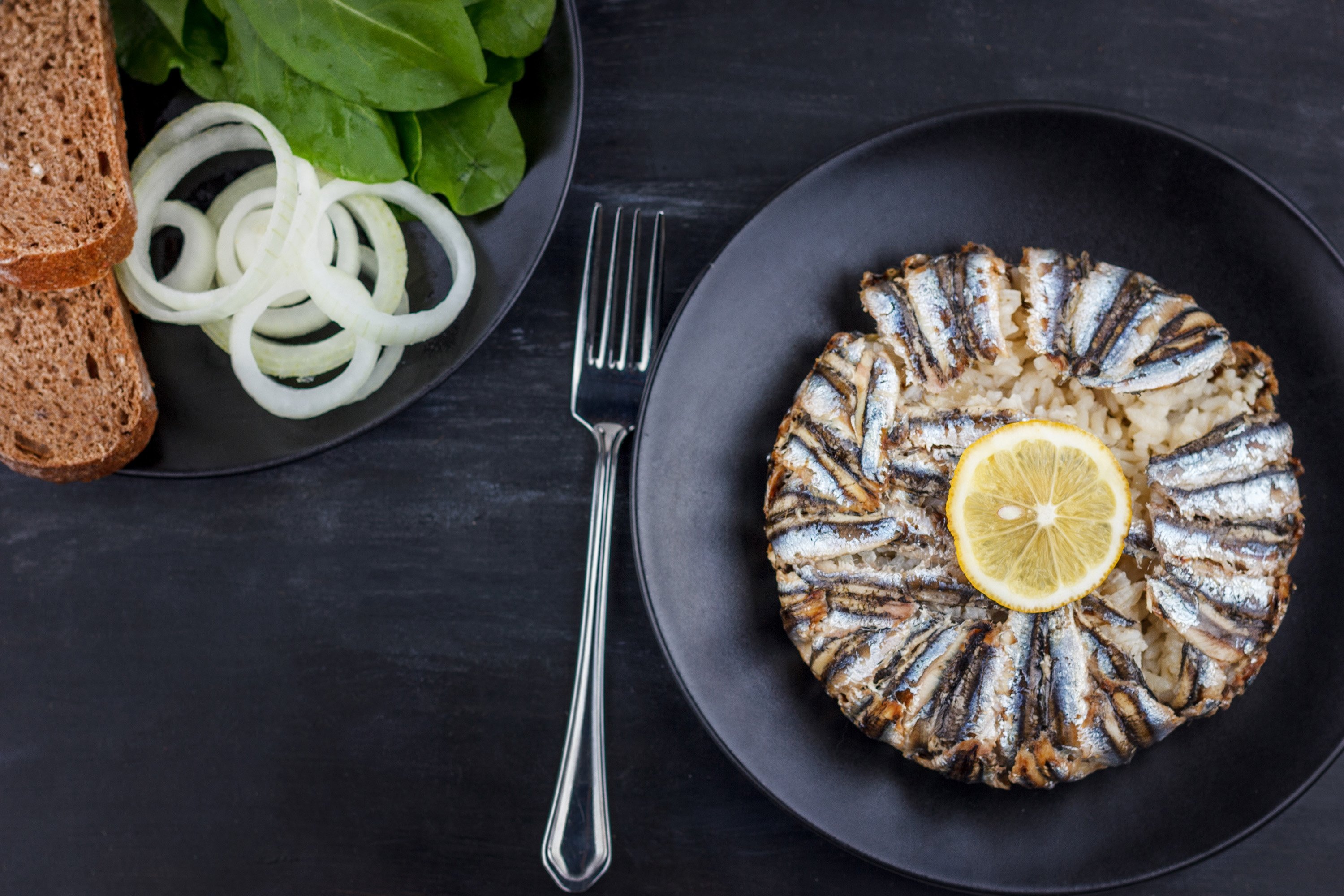© Turkuvaz Haberleşme ve Yayıncılık 2026
Calling the Anatolian anchovy, widely known as “hamsi” in Turkish, the little mascot of the Black Sea and then offering recipes for how to eat it may sound a bit vicious, I admit. But it is what it is – the hamsi was officially deemed a mascot at the 2011 European Youth Olympic Festival held in Trabzon, as just one example. While you can surely find this little fish in the Marmara Sea as well, the Black Sea version is more common. As I am from Trabzon, this fish has been part of my life, and dinner tables, for as long as I can remember.
With the arrival of cold weather, this small yet fatty fish has hit stands across the country. It is rich in omega-3 fatty acids, is known to lower cholesterol levels and is a great source of protein. The health benefits aside, this fish is literally everywhere in the Black Sea cuisine – even in desserts. However, today I’d like to dive into the most common ways to enjoy this little aquatic wonder.
How to clean it
Many vendors in Turkey will do the rough cleaning of your fish for a small fee but some won't even offer to do it. Personally speaking, I’d rather do it myself because it is really fast and easy to do. You first need to break off the head. Most of the guts will be removed by that move. Using your thumb or fingers, try to fish out the remaining guts until the fish is clean. Place it into a bowl of water as you move on to the next ones. After doing a few, you’ll start to get the hang of it and be surprised at how quickly you’ll be done. Make sure to wash them under running water at the end and check to see if the insides are clean.
For some of the recipes mentioned here, you’ll also need to remove the bones, and that is just as simple. From the side where the head used to be, grasp the bone and pull or peel it out. Usually, you'll get a clean file of bones that are still attached to each other – sometimes, not so much. It really depends on how fresh and big the fish are.
Oven-baked
The lightest and probably easiest way to cook these fish is to bake them. Once they are cleaned and the excess water has dripped off, lay them onto a baking pan of your choice and bake them for about 15-20 minutes at most, though the time will be dependent on their size. Once you are sure the fish are baked through, take them out and enjoy them with a side of a healthy winter salad. Hamsi is by nature pretty fatty so you don’t need to add extra fat while baking.
Fried
This is the most common way that people enjoy this little fish. After letting the water drip off your cleaned hamsi, roll them in cornflour (wheat flour will also do) and arrange them on a pan with plenty of oil inside. Fry them on both sides for a few minutes to make sure they are cooked. With frying, you won’t really need to pick the bones out as they get quite crispy. Some Turks even say that only the “amateurs” try to fiddle around with that. But enjoy it the way you want it and are comfortable with.
Pickled
Not as common as the other ways, consuming hamsi pickled is another way to eat this fish. This is done the same way as pretty much anything else that gets pickled. After cleaning and deboning the fish, you'll have to pack them neatly into a glass jar or container of your choice and sprinkle some salt between each layer. Once the container is stuffed to the brim with the fish and the salt, add one last layer of salt and make sure the jar is closed off securely. Some people even add a flat stone on the top to keep the fish in place. Let this mix rest in a cool and dark place (the fridge will do if you are living in a hot environment). After four to five weeks, you can take them out, letting them rest in water a bit to get rid of the overly salty taste. The best way to enjoy this delicacy is with some vinegar or lemon (or both) sprinkled over and a bit of olive oil. If you want a bit of kick, you can add some red pepper flakes or dried chili flakes (look for "pul biber" in Turkish markets) as well.

Hamsi and leek fritters
We are now charting fancier territory with our hamsi recipes. I prefer calling this a fritter, but you're most likely to see people from the Black Sea cook it in a big batch, pouring all of the dough into a big pan, frying it and then dividing it. You can, of course, make them in smaller portions so that they are easier to share and store.
Ingredients
Instructions
Clean and debone the hamsi. Let the water drip off from the fish. Chop the leeks thinly, wash them well and toss them together with the hamsi into a bowl. Add the eggs and slowly start adding flour. You should get a thick dough, of the consistency that very slowly falls off a spoon. You might need to add more flour or an additional egg depending on the ingredients you have, as different qualities of flour make for different consistencies. Fry them on both sides in small batches or one huge one – whichever you might like. Serve warm or cold.
Hamsi pilav – Two ways
Combining two staples of the Turkish cuisine, hamsi and pilav (rice), makes for a filling and yummy main course. While the first variation I'll cover is definitely the best-known throughout Turkey, the second one was is from my childhood and showcases the taste of the fish better – or so I argue.
Sweet-ish pilav
Ingredients
Instructions
Clean and debone the fish. Let the rice soak in water for at least 20 minutes. Meanwhile, chop the onions and saute them in olive oil until they get soft. Add the rice, currants and seasoning and fry them all together. Add the hot water and let all the ingredients cook together until the water has been absorbed completely.
If you want to go the baking route, oil up your tin of choice and lay the hamsi's outer sides down as the first layer and cover the tin completely with them. If you want to do this in a pan, line the hamsi in the same manner. Add the chopped dill to the rice, give it a quick mix and add the rice on top of your hamsi-lined tin or pan. Cover the top of the rice again with another layer of fish, making sure the skins are facing up. Bake at 180 degrees Celsius (355 degrees F) until the hamsi changes color, or if cooking in a pan on low heat, until the hamsi are cooked through. With the baking method, you won’t need to flip it, but with the pan, you will.
Let the dish rest for a bit after cooking and serve, preferably turned upside down to present the perfectly aligned hamsi.
Note: The amount of hamsi needed may change depending on how big your tin or pan is.

Spicy pilav
Ingredients
Instructions
Clean and debone the fish. Let the rice soak in water for at least 20 minutes. Meanwhile, chop the onions and saute them in olive oil until they get soft. Add the tomato paste and cook for a minute or two. Add the rice and boiling water and cook them until the rice has absorbed the water completely. Now add some of the hamsi and mix it into the rice. Make sure you leave enough of the hamsi left over to cover the rice mix after placing it into a baking tin of your choice. Add the seasoning and the parsley before you lay a layer of hamsi on top, in the same way as the sweeter version. Put it into the oven and bake at 170 degrees Celsius until the hamsi changes color.
